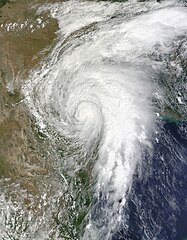#428 Postby Andrew92 » Wed Jul 15, 2015 7:44 pm
The following post is NOT an official forecast and should not be used as such. It is just the opinion of the poster and may or may not be backed by sound meteorological data. It is NOT endorsed by any professional institution or storm2k.org. For official information, please refer to the NHC and NWS products.
Well, we have had the kind of storm that has been commonplace in traditional El Nino events in recent years: one that forms from a frontal low off the East Coast in the middle part of July, heads quickly out to sea lasting only a couple days or so, and isn't very strong. 1997 had three of these (although Bill was a hurricane), 2002 had Arthur (was a Modoki, but had warmish anomalies in the eastern Pacific too, which may have acted to sort of act like traditional), and 2006 had an unnamed storm and Beryl.
It's still a little hard to say what exactly the peak of the season might be like except that the MDR and Caribbean will likely be inactive due to the influence on El Nino. But what might happen over the next month as we get ready for the peak, say between now and August 15?
History is often the best teacher, and if 1997, 2002 (Modoki or not), and 2006 are any indication, the Atlantic probably won't see much between now and August 15. 1997 still had Danny to come for the Gulf Coast and a brief East Coast threat later, 2002 would have short-lived storms Bertha and Cristobal in early August, and after the unnamed storm and Beryl, there was Chris just north of the Caribbean in 2006. Of course, the 2006 storms hadn't happened yet, and with both being off the East Coast, plus later Danny and Cristobal, I wouldn't rule out another weak storm in that area between now and that date. Other examples of activity off the East Coast in El Nino years between now and August 15 include Dolly in 1968, Belle in 1976, and Arlene in 1987. All of those storms were hurricanes, but the El Ninos in 1968 and 1976 were weaker than this year's (and Dolly was a Category 1), and Arlene took a long time to finally become barely a hurricane far out to the east, so I have doubts we will see a hurricane in that area this year.
What about the Gulf of Mexico, the area I think could be a place to watch? I mean, Danny in 1997 hadn't formed just yet and Bertha in 2002 was still to come. A look back at other El Ninos shows Bertha in 1957, an unnamed storm in 1987, and Beryl in 1994 also developed in this period in that region. Only Danny was a hurricane, because it sat over the water longer than all the others did. This El Nino probably won't get as strong as 1997, but that doesn't really improve the chances for seeing a hurricane by August 15 in this part of the Atlantic. Hurting chances is that the Gulf of Mexico at this time is quite unfavorable with 25-30 knots of shear, though that can change during these next 30 or so days.
Further, the majors in the Gulf of Mexico in El Ninos have included Audrey in 1957, Betsy in 1965, Anita in 1977, Isidore in 2002, and Lili in 2002. Of these, only Audrey had taken place by now. Therefore, just because I'm not calling for a big storm in the Gulf of Mexico during these next 30 days or so, or even a hurricane, doesn't mean it won't happen closer to the peak, a much more likely period. The fact remains that no hurricanes took place in the Gulf last year, and that is usually followed by a season with at least one major, even if the year is El Nino. 1977 as such might be a great analog for this season, given the strength of this event, though I suspect we will have significantly more EPAC activity than that year.
-Andrew92
Last edited by
tolakram on Wed Jul 15, 2015 9:02 pm, edited 1 time in total.
Reason: fixed tags
0 likes

















